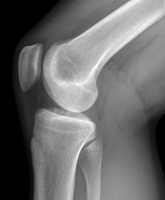
02 Feb Knee Realignment Surgery May Delay or Prevent Some Knee Replacements
MedicalResearch.com Interview with:
Codie Primeau, MSc
Physical Therapy Student & Ph.D. Candidate (Combined MPT/Ph.D.)
Wolf Orthopaedic Biomechanics Lab, Fowler Kennedy Sport Medicine Clinic
Western University
London, ON, Canada
MedicalResearch.com: What is the background for this study?
Response: High tibial osteotomy (HTO) is a surgery for patients with varus alignment (bowed legs) and earlier-stage knee osteoarthritis. By correcting alignment, HTO shifts load to less diseased parts of the knee. One of the goals of HTO is to delay or even prevent the need for knee replacement surgery later.
 MedicalResearch.com: What are the main findings?
MedicalResearch.com: What are the main findings?
Response: Currently, rates of HTO in North America are very low, potentially due to a perception that patients will go on to replace the knee relatively soon after the initial procedure.
In this study, most patients (95%) who underwent HTO did not undergo knee replacement within 5 years after surgery, and 79% did not undergo knee replacement within 10 years.
- Knees treated earlier in the disease process had the highest longevity after HTO, with 87% not getting knee replacement within 10 years.
- Even in patients traditionally not considered ideal HTO candidates (e.g., females, patients with later-stage disease), around 70% did not undergo knee replacement within 10 years.
MedicalResearch.com: What should readers take away from your report?
Response: HTO should not be avoided because of a perception that the patient may undergo knee replacement anyway. When combined with other studies that show an improvement in pain and function after HTO, the findings suggest patients experience many years of benefit from the surgery.
MedicalResearch.com: What recommendations do you have for future research as a result of this work?
Response: It is important to acknowledge the study did not have a control group without HTO, or outcome measures other than subsequent knee replacement surgery. We are currently comparing HTO plus non-operative treatments (therapeutic exercise and diet) to non-operative treatments alone, using a number of measures to assess joint structure, patient’s symptoms, and costs. Additionally, we think the substantial biomechanical changes induced by HTO provide an opportunity to learn more about osteoarthritis disease mechanisms that may inform other types of treatments.
MedicalResearch.com: Is there anything else you would like to add?
Response: Historically, HTO has been offered as a treatment for patients in late-stage disease. Patients and clinicians often wait until symptoms and x-rays show severe joint damage before considering HTO, and often don’t consider it at all. Hopefully, the present study will make more people aware of the potential benefits of HTO – and get them thinking about it earlier rather than later.
Codie Primeau, PhD(c), Faculty of Health Sciences, Collaborative Training Program in Musculoskeletal Health Research, Bone and Joint Institute, Western University
Trevor Birmingham, Professor and Canada Research Chair, Faculty of Health Sciences, Bone and Joint Institute, Western University
Robert Giffin, Professor of Surgery, Schulich School of Medicine and Dentistry, Bone and Joint Institute, Western University
Citation:
Total knee replacement after high tibial osteotomy: time-to-event analysis and predictors
Codie A. Primeau, Trevor B. Birmingham, Kristyn M. Leitch, Kevin R. Willits, Robert B. Litchfield, Peter J. Fowler, Jacquelyn D. Marsh, Bert M. Chesworth, Stephanie N. Dixon, Dianne M. Bryant and J. Robert Giffin
CMAJ February 01, 2021 193 (5) E158-E166; DOI: https://doi.org/10.1503/cmaj.200934
[wysija_form id=”3″]
[last-modified]
The information on MedicalResearch.com is provided for educational purposes only, and is in no way intended to diagnose, cure, or treat any medical or other condition. Always seek the advice of your physician or other qualified health and ask your doctor any questions you may have regarding a medical condition. In addition to all other limitations and disclaimers in this agreement, service provider and its third party providers disclaim any liability or loss in connection with the content provided on this website.
Last Updated on February 2, 2021 by Marie Benz MD FAAD
